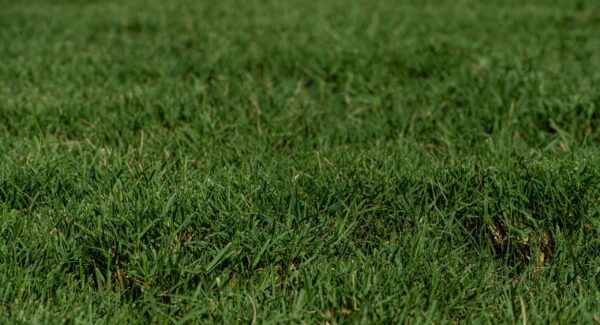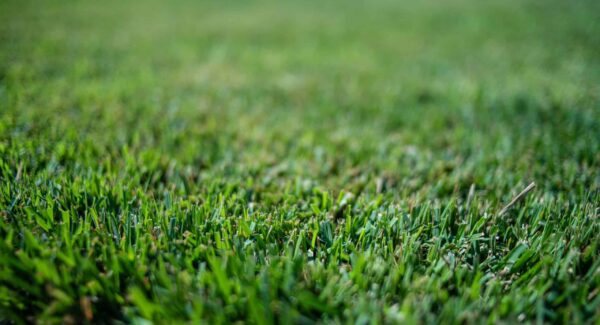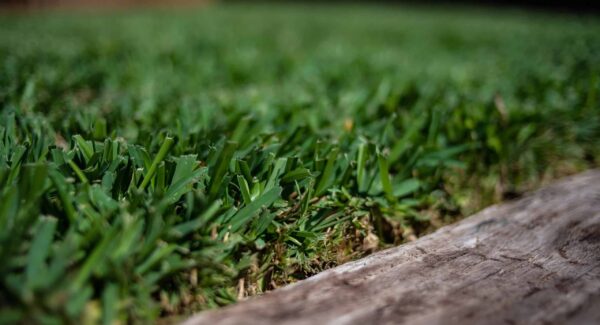When To Plant Zoysia Palisades Grass In Texas
Intro
If you’re in Texas and considering having a beautiful new lawn, consider planting Zoysia Palisades grass. This text will help you understand how, what is essential, and when is the best time to do that.
Due to its drought resistance, aesthetic appeal, and ability to thrive in high temperatures, Palisades Zoysia is a popular choice for Texas lawns.
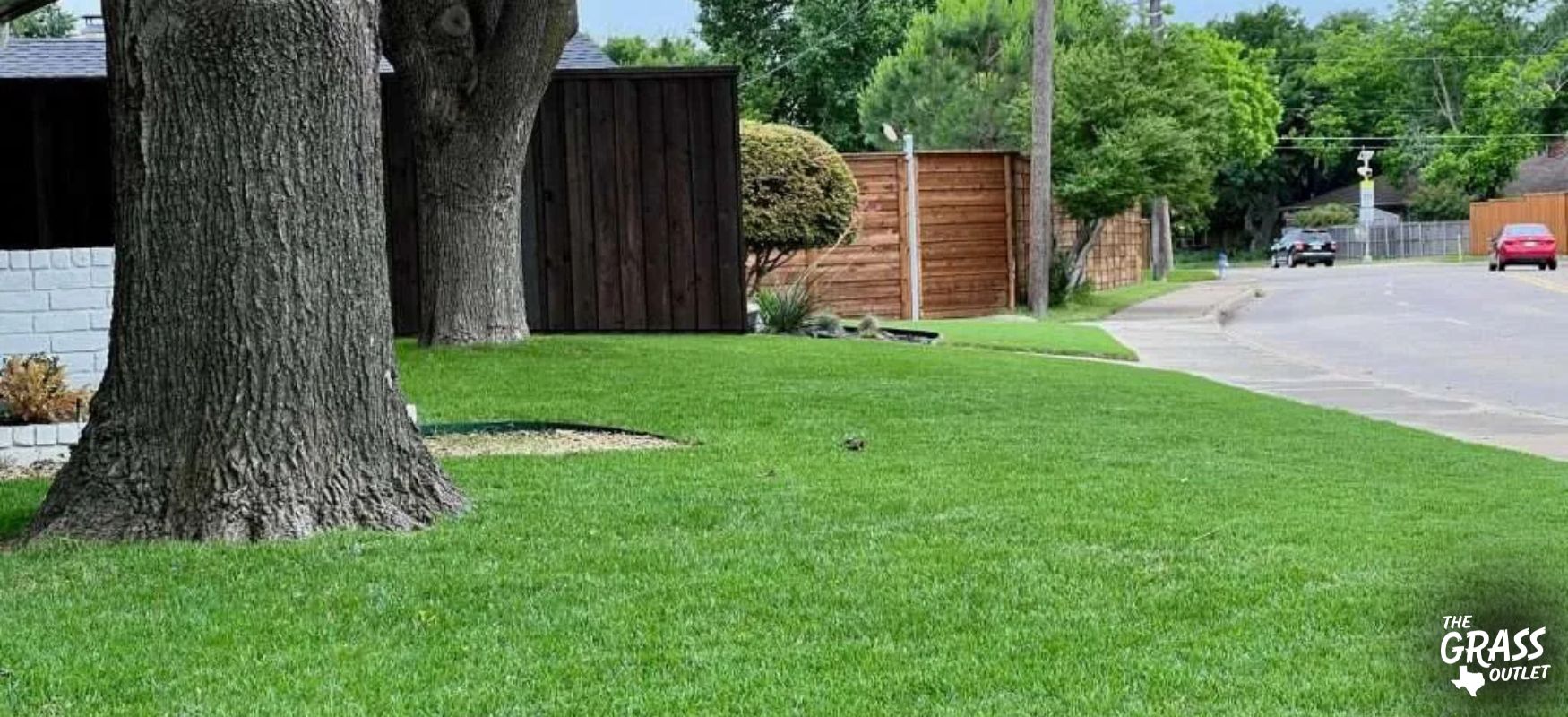
Understanding the Best Planting Time For Palisades Zoysia
Zoysia grass is most successful in spring, following the final frost date. In Texas, the recommended timeframe for planting Zoysia is from March through May, allowing the grass to establish itself before the arrival of the hot summer months. Early planting is crucial to avoid potential damage from high temperatures and potential water restrictions.
Zoysia thrives in temperatures ranging from 65 to 90 degrees Fahrenheit as a warm-season turf grass. However, planting Zoysia too late in the season, in July and August, carries risks due to the extreme triple-digit temperatures, which can stress the grass and cause it to enter dormancy, turning brown and potentially not recovering even when cooler temperatures return in the fall.
Soil Preparation and pH Levels
Spring offers the optimal conditions for planting Zoysia grass since temperatures are warm and the ground is moist. But before planting, you should prepare the soil properly.
Zoysia grasses are adaptable to various soil types, including sandy soil or clay soils, basic or acidic. Following the initial steps, check the soil pH, aiming for a range between 6 and 7 for optimal Zoysia growth. If the soil pH falls below 6, it can be adjusted by applying lime to lawn or sulfur as necessary.
Soil preparation is crucial for weed prevention and overall plant health. Therefore, it’s imperative to remove any existing vegetation, dead grass, or weeds from the lawn area before planting to create a suitable environment for Zoysia grass to thrive.
Palisades Zoysia Planting Methods: Seeds and Sod
When considering planting methods, compare different approaches. Remember that Zoysia grass seed has a slow germination rate, and seedlings often take up to two months to emerge.
Opting for sod simplifies the process significantly, but it’s necessary to ensure proper planting to facilitate root establishment and vigorous growth.
To achieve this, select a location that is exposed to a minimum of 3-4 hours of sunlight daily, and prepare the soil by tilling it and ensuring good drainage before laying the sod. If necessary, amend the soil with garden or landscape soil mix .
After planting, immediately water the sod following watering schedule for new sod , and continue to water it regularly on daily bases until it becomes established.
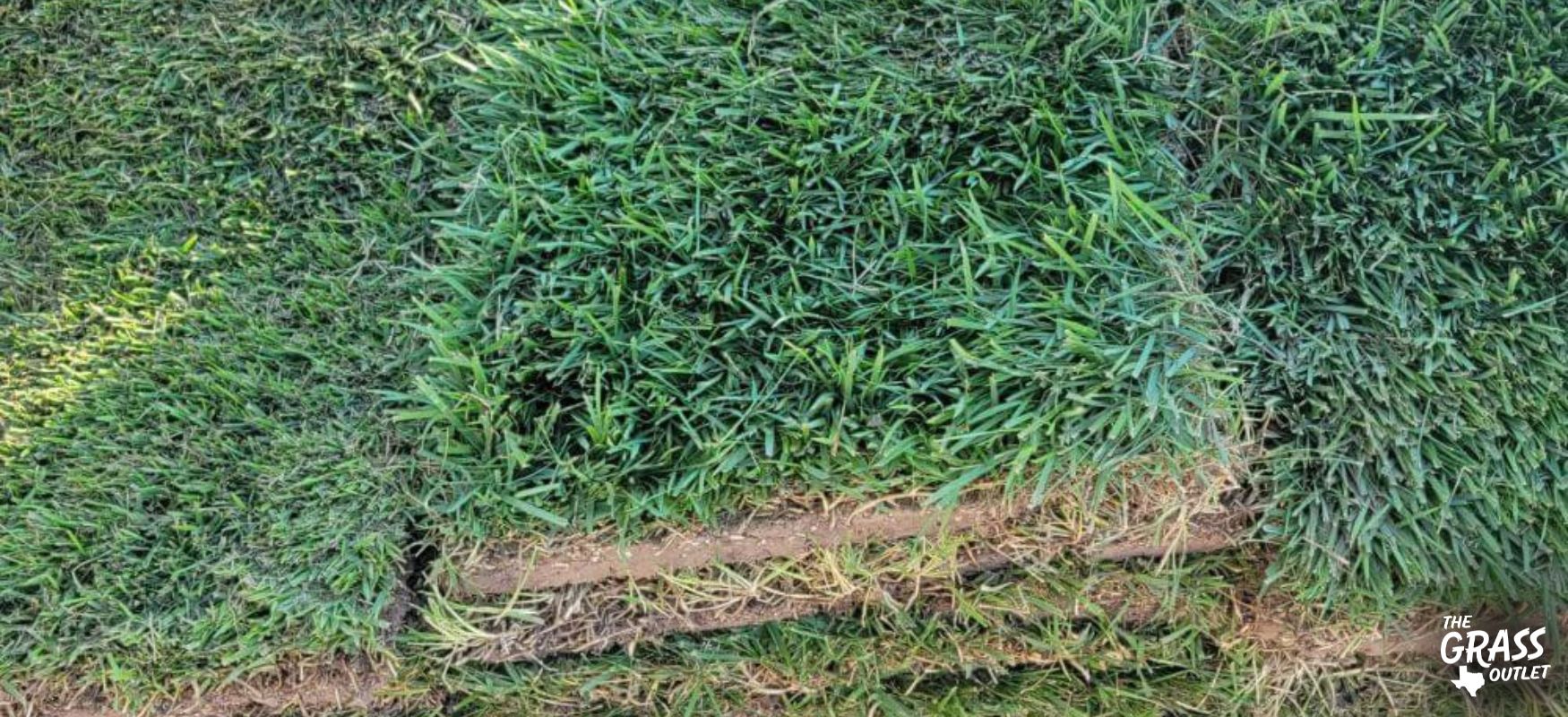
Care and Maintenance After Planting
Paying close attention to planting and early care will encourage robust growth and advancement of the Zoysia grass sod. Zoysia sod offers a low-maintenance option with reduced mowing and watering needs.
However, ensuring adequate watering is crucial for new Palisades Zoysia sod. Water thoroughly upon installation to prevent drying out, aiming for wet soil 6 inches deep. Initially, 1.5 inches of water is applied daily for the first ten to fourteen days, then can be reduced to every other day once the roots establish into the soil and the seams are growing in. Gradually, irrigation can be decreased to once every other day, and eventually to 1 inch of water per week.
Wait until Zoysia reaches a little over 3 inches in height before the first mowing, removing a minimal amount (no more than a ⅓ of the leaf surface). Quality Zoysia sod laid during the active growing season, with proper Palisades Zoysia care, can typically be mowed around two weeks after sod installation.
Mowing helps control weeds and stimulates Palisades Zoysia growth. However, if weed infestation is severe, use spot weed killers sparingly and as a last resort. Nitrogen is essential for lawn health, and while other warm-season grasses may require more of it, Zoysia grass needs minimal nitrogen-based fertilization.
For more care tips, check our Grass Care Guide section. If you are looking for professional assistance or advice, contact The Grass Outlet experts directly.
Addressing Common Problems and Solutions
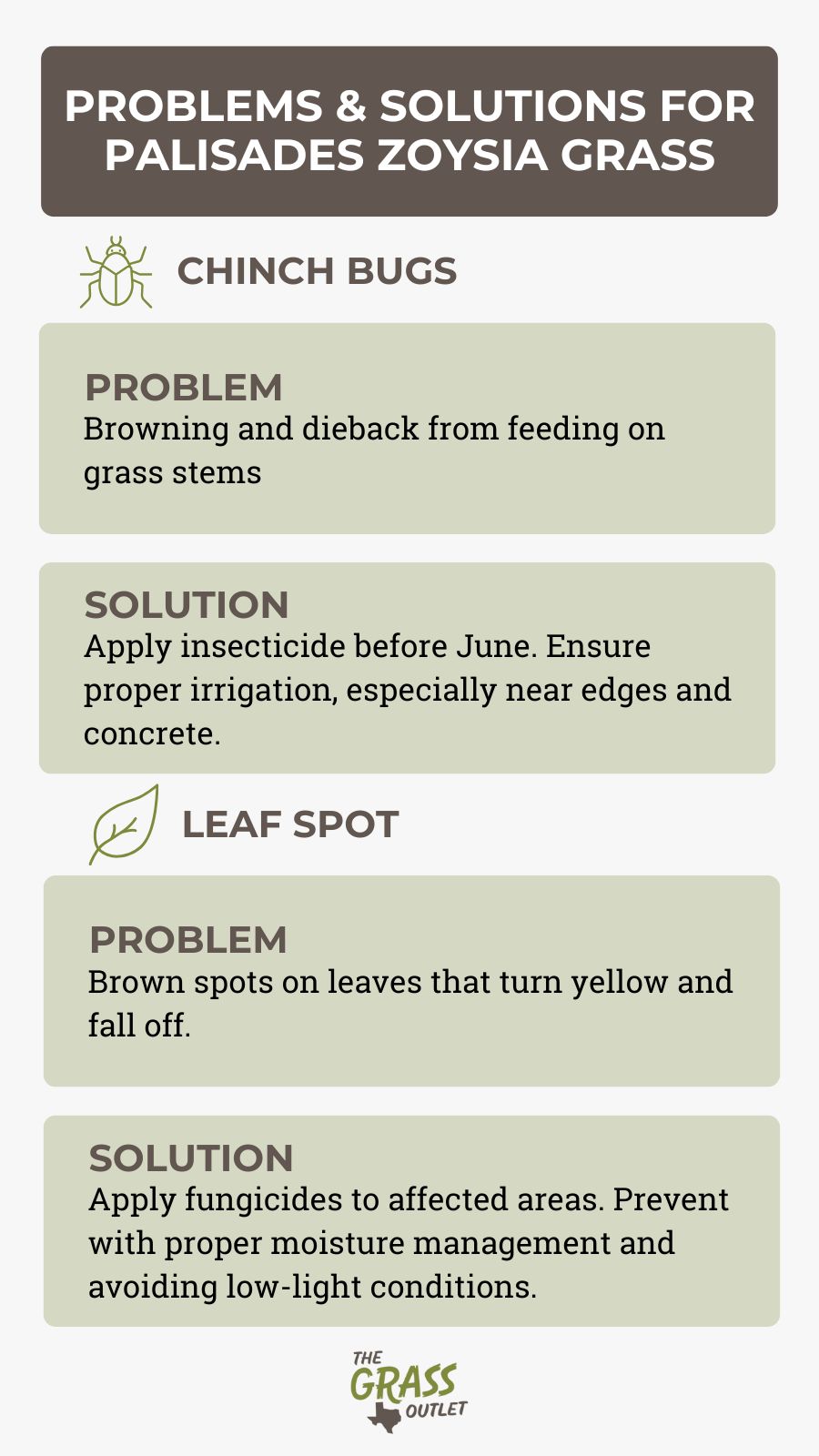
Before planting Palisades Zoysia grass, you should be aware of one more thing—potential issues that may arise, such as fungal diseases or pests like common bugs. The good news is that with proper care practices, you can prevent your lawn from unwanted circumstances.
Pests like chinch bugs feed on Zoysia grass stems, leading to browning and dieback. If you apply insecticide treatment on time, typically before June, it usually doesn’t cause extensive damage. Ensuring your lawn is properly irrigated during high-heat temperatures – especially along edges and near concrete -will greatly reduce instances of chinch bug infestations.
Leaf spot is another issue that manifests as circular brown spots on leaves. In most cases, these spots eventually turn yellow and fall off. Treatment options include fungicides applied directly to affected leaves. However, low-light exposure, coupled with excessive moisture, can make things worse. So maintaining proper moisture is a good approach to preventing this disease.
Final Thoughts
Planting Palisades grass in Texas offers numerous advantages, given its drought resistance, Zoysia’s ability to tolerate partial shade, and capacity to maintain a lush appearance even in hot summers with limited water or nutrients.
This type of grass requires moderate upkeep, while proper planting is essential to guarantee its flourishing. Despite its resilience, caution is advised when planting Zoysia, particularly in southern states, to avoid the extreme summer and winter temperatures.
If you have any conncerns or questions about Zoysia grass, contact The Grass Outlet. Our experts will assist you in resolving any issue.
